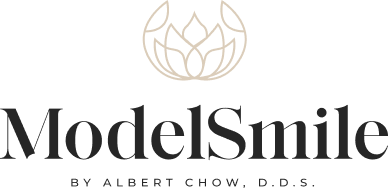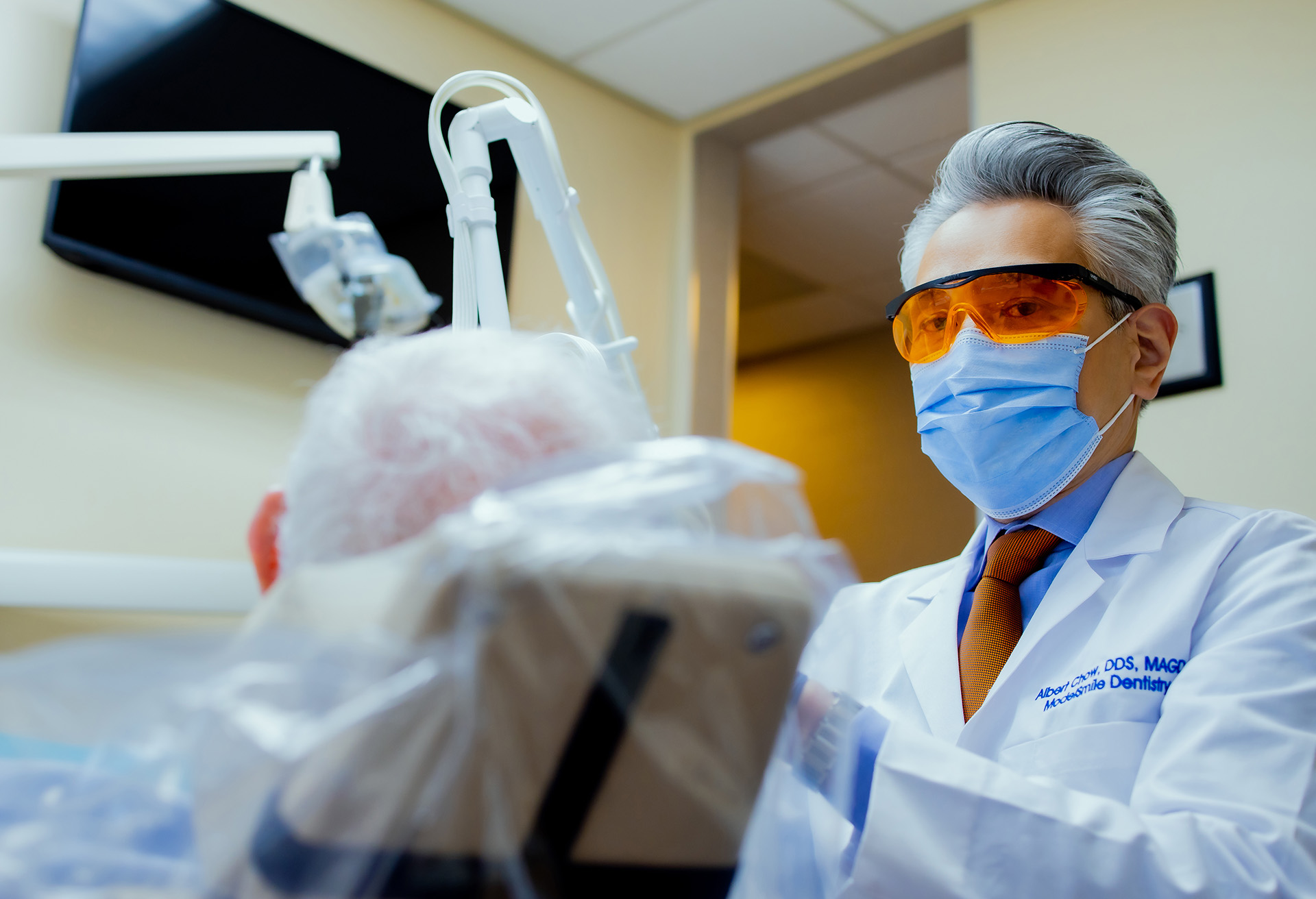The skilled hygienists at ModelSmile Dentistry routinely perform pain-free and relaxing teeth cleaning in Thousand Oaks.
If plaque and tartar are able to build up, however, bacteria starts to grow at and below the gum line. As it progresses, infection from the bacteria can attack the soft tissues, bone and tooth root. Left unhandled, the result can be red, swollen, bleeding, and painful gums that begin to recede from the tooth. Bone in the jaw begins to break down, and teeth become loose and can even fall out.
Moreover, gum disease can spell trouble for other parts of the body and is associated with heart disease, diabetes and other serious conditions.
Our skilled hygienists will always check for any signs of gum disease, and if any is found, Dr. Chow will go over the findings with you. Most commonly, gum disease can be thwarted with scaling and root planing.
This procedure, often called deep cleaning, involves scraping the hard tartar that has accumulated above and below the gum line, and smoothing the tooth root (planing) so that bacteria can't hide. You can have the beginning stages of gum disease (gingivitis) without symptoms, but if you do have symptoms, contact us as soon as possible. The earlier the infection is caught and handled, the easier and less time consuming it is. You can contact us any time of day or night if urgent dental care is needed.









